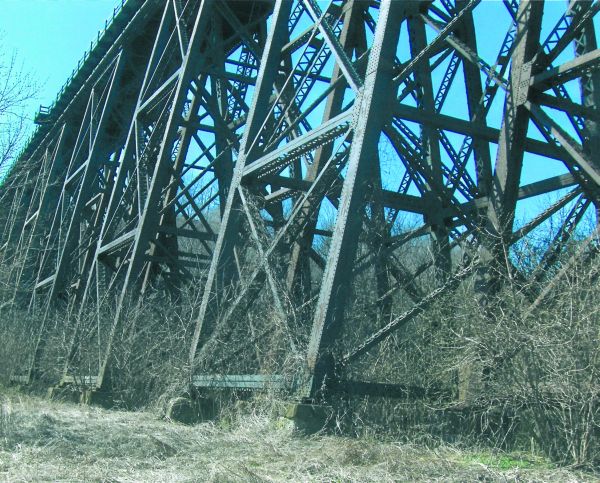


A rusted bridge bisects a barren field. It is both a symbol of mankind’s mastery of the laws governing our physical universe, and at the same time, a sobering reminder that nothing lasts forever. People have been perfecting the engineering of bridges since the early days of Neolithic tree trunk overpasses (simple beam bridges) through the stone arch bridges invented by the ancient Greeks, to the modern day wrought iron and steel mega structures (cantilever, cable-stayed, and truss bridges).
This example of a truss bridge crosses the Don River in North Toronto. Truss bridges are typically made of numerous connected straight elements, capable of withstanding stress from both tension and compression. The myriad aesthetically pleasing triangles actually dissipate vertical forces laterally, and increase the bridge’s structural integrity. “Statics” is the branch of physics which concerns itself with the analysis of the bridge structure and function. Made from a frame of reinforced steal beams and concrete, this bridge was designed to last about 75 years. As seen in the photograph, numerous rusty patches evince the toll of time and weather on this soon- to-be-retired structure.